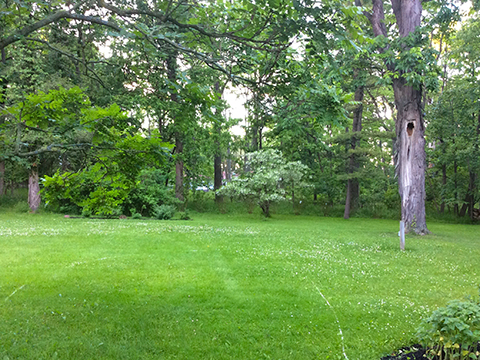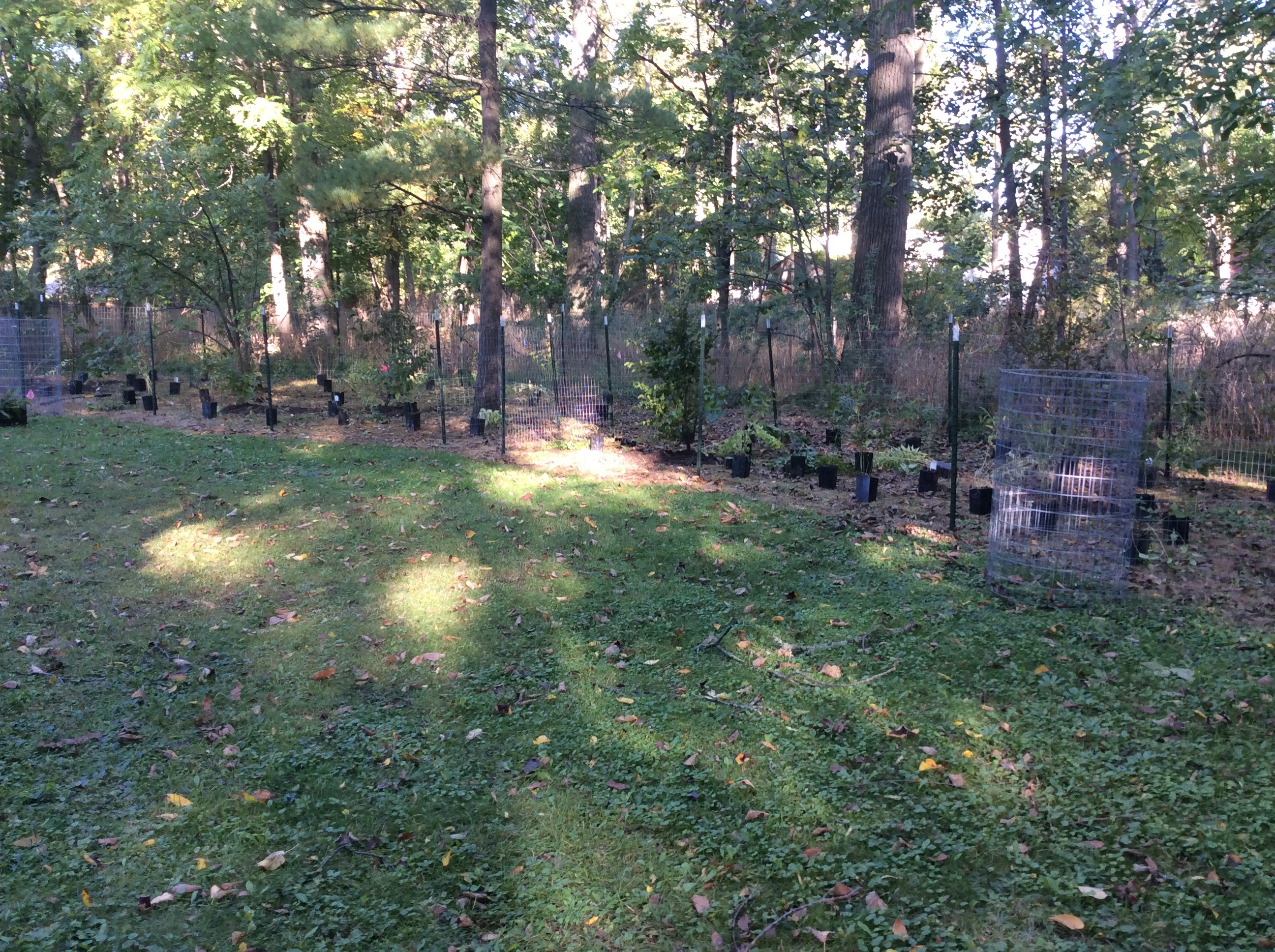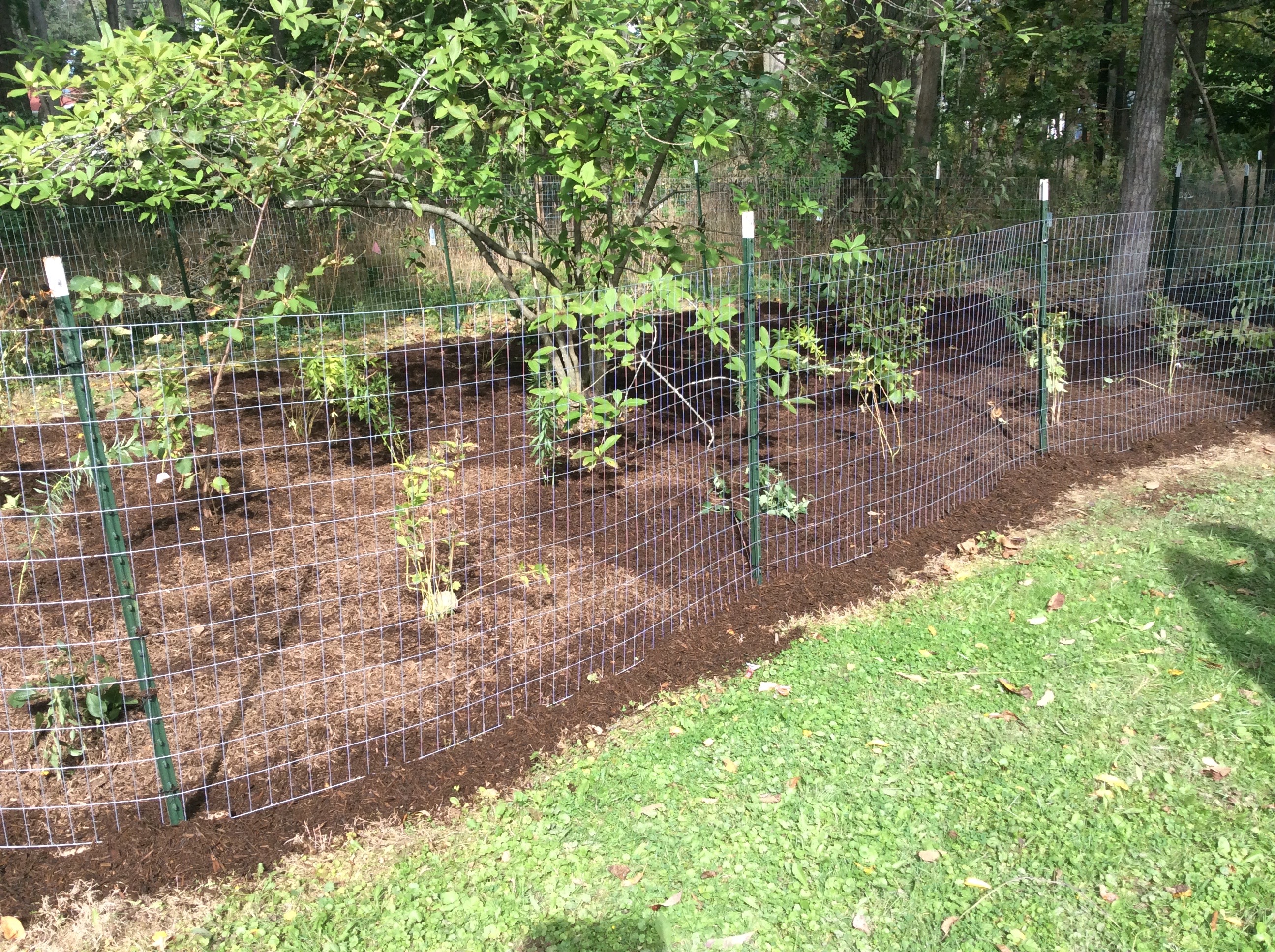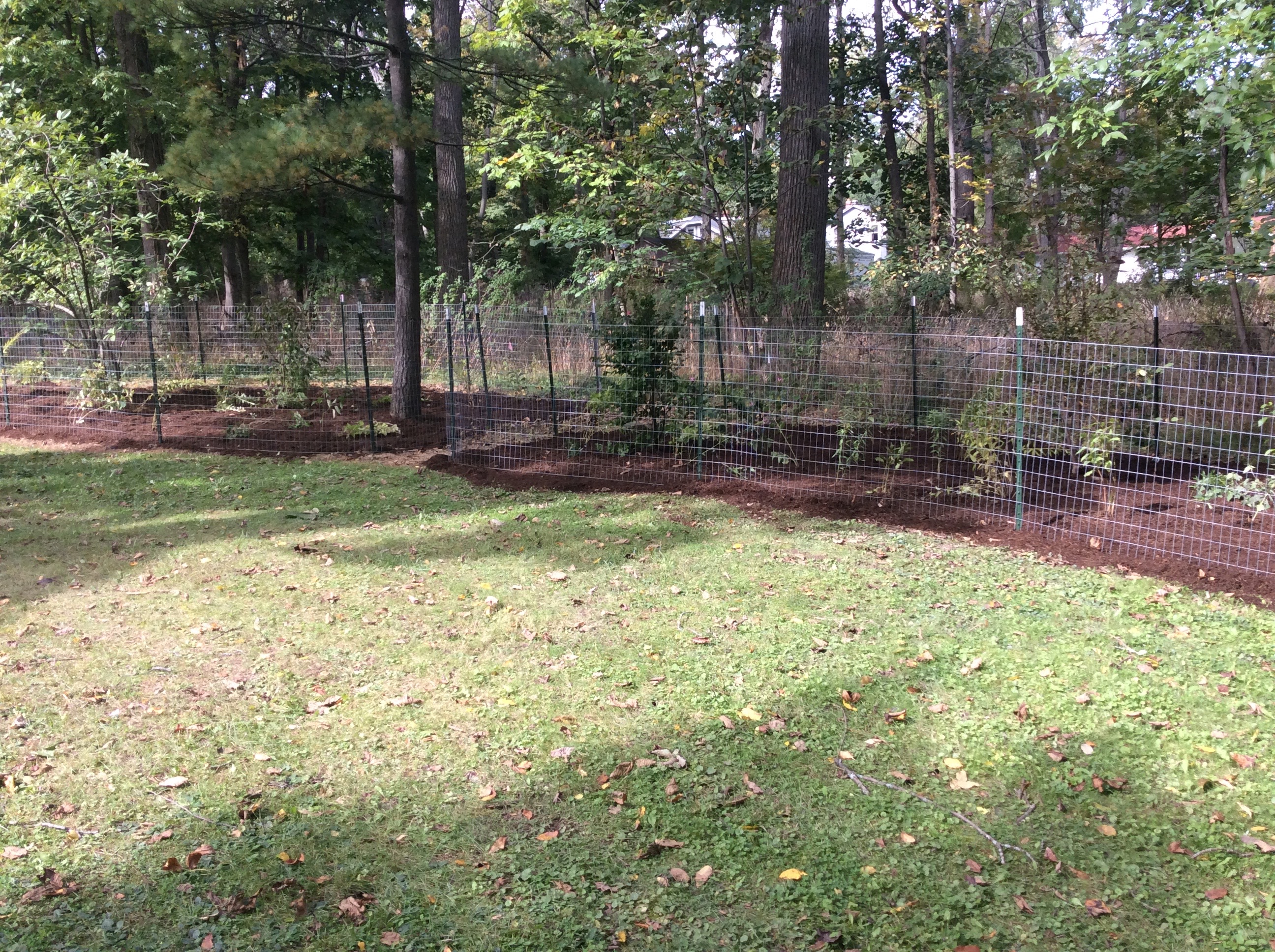 |
| Home | Ordering By Mail | Purchase Manual: Using Native Plants in Urban Landscapes |
|
|||||
Habitat Garden
A strip of degraded woodland separated the owners property from neighboring yards. Over the years the woodland had been colonized by several invasive woody species which will be removed prior to planting. Several mature trees had also died leaving openings in the woodland. During the winter months after the leaves had fallen the adjacent houses were readily visisble. The owner wanted to screen the view but also enhance the beauty of the woodland border.
A 100 ft long x 20 ft wide strip was intensively planted with a combination of native trees, shrubs and perennials. The choice of species, dense plantings and use of native speices will create valuable local habitat for many birds, insects and other animals.

The view before planitng began

Plants layed out and ready to plant. The fencing will protect the plantings during the initial
establishment phase and for the critical first couple of years until the planting is well established.


Species were chosen that will provide exceptional oranamental features, will establish quickly, grow rapidly and be fairly resistant to deer browsing..
A broad range of species were included
to increase the biodiversity in the immediate area. Once the palnts have matured and begun to produce seed
it is expected that birds and natural dipsersal mechanisms will help these plants colonize the nearby woodland.
SPECIES LIST
Trees:
American hornbeam (Carpinus caroliniana)
Mountain Silverbell (Helesia mnticola)
Paper birch (Betula papyrifera)
Persian parrotia (Parotia persica)
Pagoda dogwood (Cornus alternifolia)
Common chokecherry
(Prunus virginiana)
Shrubs:
Spicebush (Lindera benzoin)
Witch hazel (Hamamellis virginiana)
Bayberry (Myrica pensyllvanica)
Silky dogwood (Cornus amomum)
Black elderberry (Sambucus canadensis)
Perennials:
Blue star (Amsonia tabernaemontana)
Orange coneflower (Rudbeckia fulgida)
Spotted joe pye weed
(Eupatorium
Wild bergamot (Monarda fistulosum)
Culvers root (Veronicastrum virginicum)
Ox eyed sunflower (Heliopsis helianthoides)
Blue mist plant
(Conoclineum coelestinum)
Pink turtlehead (Chelone lyonii)